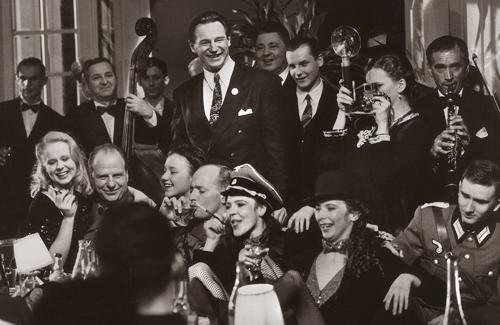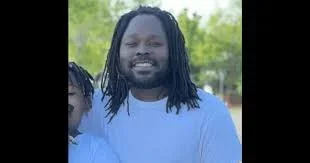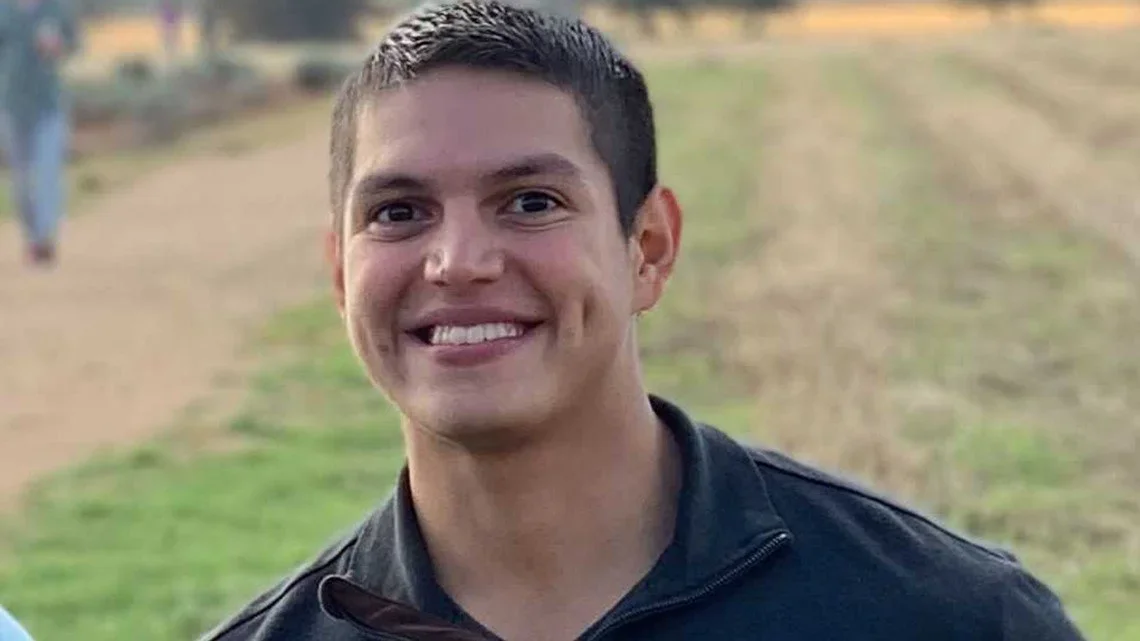Schindler’s List : Polish Dumplings Recipe 🥁 🥁 🥁 🥁 🥁
/Year Released: 1993
Directed by: Steven Spielberg
Starring: Liam Neeson, Ralph Fiennes, Ben Kingsley
(R, 195 min.)
Genre: War Drama
Seven Oscars including
Best Film
Best Director: Steven Spielberg
“Oskar, there are eleven hundred people who are alive because of you. Look at them.” — Itzhak Stern
Probably the most significant Holocaust film ever made, with Steven Spielberg using his directorial clout to raise awareness of one of the worst atrocities of the last century. Over a quarter of a century later, Schindler’s List is even more relevant today.
***
Businessman Oskar Schindler (Liam Neeson) arrives in Krakow in 1939, ready to make his fortune from World War II, which has just started. After joining the Nazi party primarily for political expediency, he staffs his factory with Jewish workers for similarly pragmatic reasons. When the SS begins exterminating Jews in the Krakow ghetto, Schindler arranges to have his workers protected to keep his factory in operation, but soon realizes that in so doing, he is also saving innocent lives.
We naturally turn away from evil, but sometimes we need to confront it face on, as the recent Sound of Freedom has. Spielberg was so aware of the haunting subject matter of Schlindler’s List that he put off making it for 10 years. He did not think he was mature enough to direct it. Spielberg even assigned the film to Martin Scorsese for a while and then had to negotiate with him to get it back when he felt he was finally ready. Scorsese gave Spielberg Schindler’s List and he got Cape Fear. Furthermore, Spielberg refused payment for making for the film, rejecting what he called “blood Money.”
One of the most intriguing things about the film is watching Schindler’s gradual transformation from a self-serving German businessman concerned with his own prestige, ego, and money to a truly altruistic savoir of the Jews he originally employed because their labor was cheaper.
Spielberg rejected known stars Kevin Costner, Mel Gibson and even actor Warren Beatty for the lead, dropping Beatty because he “would have played it like Oskar Schindler through Warren Beatty.”
Instead he selected a “relatively unknown Irish actor,” Liam Neeson, who seemed to have the charm, strength, and the same easy way with women as Schindler himself did. So, you youngsters who only know Neeson through his recent bad boy thrillers such as Taken, Unknown, The Ice Road, The Grey, Cold Pursuit, A walk Among the Tombstones, and Run All Night, will be surprised at his serious acting chops here.
The opening scenes establish his character. We first see Schindler walking past lines of Jews in the street, towering over all of them as he makes his way to a fancy restaurant in Krakow, which the Germans have now set up as their main staging area in Poland. He is a member of the Nazi party at the time and manipulates his way in to get a photo op that paves his alliance with the occupying force. Skip over the following analysis if you wish, but it is right on:
The camera follows this well dressed man from behind as he enters a fashionable club in the city of Krakow. He remains a mystery figure as he whispers in the Maitre’d’s ear and gives him some money. This is obviously a man who is used to getting what he wants, even if he has to pay to get it. The music is different to that of the last few scenes, Carlos Gardel's "Por una cabeza", a more upbeat tango played by the band in the club which makes the mood more uplifting. The maitre d’ escorts Schindler to a good, central table in the main room. Many well-dressed couples are dancing, the atmosphere overall is one of luxury and excess, emphasizing that most people seem totally unaffected by the plight of the Jews.
Schindler doesn’t follow him but instead walks round before settling on a seat at the side of the table, facing the dance floor, showing that he wants to put himself on display. Another sign that he feels quite important is that he does not thank the man for showing him to his seat. The camera follows the maitre d’ round the front of the table and we finally see the man’s face in profile. The contrast of light and shadow on his face foreshadows the dichotomy of his character. When he is sitting down he half smiles to himself, and looks contented. We realize that this handsome, slickly dressed, sophisticated playboy is Oskar Schindler (Liam Neeson), although he has not yet been identified by name.
The camera then focuses on a young attractive woman sitting at another table looking quite bored and the man’s shoulder in the foreground shows us that Schindler is gazing intently at this woman, foreshadowing the womanizing we see later in the film. The girl tries to behave nonchalantly, as if she has not noticed his interest. The camera returns again to Schindler sitting at his table, part of his face hidden by his hand holding a cigarette; he smiles gently to himself. His eyes then move to look over at two SS officers having their picture taken by a pretty woman. He looks very closely at their uniform, apparently only interested in their rank according to the medal ribbons and insignia he can see on their uniforms as the shot focuses on these rather than their faces as the photos are being taken.
Schindler is obviously in the nightclub because he wants to make contact with important members of the occupying German army. The camera then focuses on a young attractive woman sitting at another table looking quite bored and the man’s shoulder in the foreground shows us that Schindler is gazing intently at this woman, foreshadowing the womanizing we see later in the film. The girl tries to behave nonchalantly, as if she has not noticed his interest. The camera returns again to Schindler sitting at his table, part of his face hidden by his hand holding a cigarette; he smiles gently to himself. His eyes then move to look over at two SS officers having their picture taken by a pretty woman. He looks very closely at their uniform, apparently only interested in their rank according to the medal ribbons and insignia he can see on their uniforms as the shot focuses on these rather than their faces as the photos are being taken. Schindler is obviously in the nightclub because he wants to make contact with important members of the occupying German army.
Schindler buys everyone drinks and dinner, and they all become part of Schindler’s party “with all the tables merged into one enormous one.”
At the end of the scene everybody raises their glasses in a toast, the new important colonel is now standing with Schindler who has now successfully bought the friendship and respect of everybody in the club; it seems as if they have all been friends for years when in fact they have only just met.
Schindler has succeeded in his plan to insinuate himself and has become the center of the party, rubbing shoulders with everyone in the room to make a name for himself. This is the first step in his pragmatic business scheme to become a war profiteer and capitalize on the changing political environment. He is presented as a charming, sophisticated man used to buying what he wants and manipulating others.
We see Schindler at his most selfish self again when he negotiates with Itzhak Stern (Ben Kingsley) to have him run a business. Schindler intends to start an enamel plant and wants Jewish workers because they will cost less than Poles. He will pay them in “pots and pans.”
“Jews do all the work, I run the company. What do you do?” Stern retorts.
Schindler does not blink, saying that he will provide the “panache and presentation.”
As crass as Schindler is at the outset, however, Amon Goeth (Ralph Fiennes), the SS Untersturnfuher (second Lieutenant) who arrives to oversee construction of the Plaszow concentration camp nearby, makes Schindler look like a knight in shining armor.
He randomly shoots workers from the balcony of his hilltop villa and beats his Jewish maid, seemingly hating her more because he cannot acknowledge her goodness and his attraction to her.
Fiennes, who actually looked like the real Goeth, in full uniform and using Goeth’s body language, so petrified Mila Pfefferberg, a survivor who had known the real Goeth, that she actually began shaking with fear when she saw Fiennes on the set. (Gordon Cameron)
A series of juxtaposed scenes contrast the occupying Germans with others. In the early restaurant scene we see the German officer eating his food like a peasant, gulping it down and spewing it out as he talks with his mouth full. Schindler, across the table, talks with the waiter, displaying his expert knowledge of fine wines.
Another scene shows Jews in train car, crowded in like cattle, while the attendant Germans enjoy a picnic alongside them.
The turning point for Schindler occurs when he and one of his many paramours finish a ride on two beautiful steeds. They pause happily at the top of a cliff and witness the burning of the Krakow ghetto below them.
A following poignant scene shows a little girl in a red coat watching her former home in the ghetto burned to the ground. She is a symbol of innocence, and later on we see her body on a wagonload of corpses.
From then on Schindler uses all the money he has been making at his factory and from his black market dealings to bribe the Germans to allow him more and more Jewish workers, maintaining that children were needed also because the small size of their hands allowed them to polish the inside of the shells he later made at the munition factory he established in Brünnlitz,, near his hometown in Zwittau, Czechoslvakia.
Other scenes show more Nazi brutality, especially their “health check.” We see an overweight Goeth on his balcony, the doctor telling him to drink a little less. Below the Jews are forced to run naked to determine who is well enough to keep alive for slave labor, and who will be sent to concentration camps. In their desperation to look healthy, their prick themselves beforehand and smear their own blood on their lips and cheeks.
Scenes near the end of the war show desperate Germans trying to hide mass graves, exhuming bodies at burning sights as a conveyer belt dumps them in a burning pile.
Schindler talks to the guards at his factory camp at this time, knowing they may also try something cruel and desperate.
I know you have received orders from our commandant, which he has received from his superiors, to dispose of the population of this camp. Now would be the time to do it. Here they are; they're all here. This is your opportunity. Or, you could leave, and return to your families as men instead of murderers.
Those who Schindler helped survive never forgot him.
“He was sent by God to take care of us,” says Rena Finder, who at age 13 was one of the youngest Jewish workers in Schindler’s factories.
With the money he made during the war, Schindler acquired 18 truckloads of wool, khaki material, shoes and leather, which he passed on to his workers. “This is your money,” Finder recalls him saying. After the war, the tables turned; the people who had once been his Jewish laborers helped support him through a string of business failures. He died in 1974 in Frankfurt at the age of 66, but for survivors like Finder, the gratitude lives on. –Olivia Waxman
Pictured below is a 1962 picture of the real Schindler receiving a hero’s welcome in Tel Aviv from some of the Holocaust survivors he saved.
This haunting film and many others have helped us to “never forget” the six million Jews exterminated by the Nazis.
Sadly, over 100 million have lost their lives through the horrors of communism, most at the hands of Stalin, and Mao Tse Tung, who killed their own people. Sadly, very few films depict these horrors . Let us hope more will come out to join Schindler’s List in exposing the twin horrors of Nazism (National Socialist German Workers’ Party) and communism.
“Those who do not learn history are doomed to repeat it.” –George Santayana
–Kathy Borich
🥁 🥁 🥁 🥁 🥁
Trailer
Flm-Loving Foodie
We turn to a staple of Polish food, Polish /dumplings, also known as Pierogies. They certainly would grace the tables in Krakow, whether in homes before and after the war and probably also at the restaurant where Schindler first sought to ingratiate himself with the occupying Nazis.
Pierogies are probably one of the most well known Polish foods. Tender little pockets – or Polish dumplings if you like, similar to an Italian ravioli or stuffed pasta. Pierogies even have their own patron saint is called St. Hyacinth he is a 13th-century Polish saint who, according to legend brought Pierogies to Poland from Kievan Rus which is now the capital of Ukraine.
Polish Dumplings
Filling:
· 3 tablespoons vegetable oil, or as needed
· 3 onions, chopped
· 2 ½ cups mushrooms, peeled and sliced
· 7 potatoes, peeled and boiled
· 1 ⅓ (15 ounce) containers farmer's cheese
· 1 tablespoon sour cream
· salt and ground black pepper to taste
Dough:
· 8 cups all-purpose flour, or more as needed
· 2 large eggs
· 6 tablespoons unsalted butter, room temperature
· 2 cups lukewarm water
Directions
1. Prepare filling: Heat oil in a large skillet over medium heat. Cook and stir onions and mushrooms in hot oil until soft, about 15 minutes. Remove from heat and set aside.
2. Pass potatoes and farmer's cheese separately through a food grinder or food processor; place both in a large bowl. Add onion-mushroom mixture, sour cream, salt, and pepper; mix until well combined and set filling aside.
3. Make dough: Place flour on a clean work surface and form a well in the center. Crack eggs into the well. Add butter and a few tablespoons warm water. Mix with your hands, gradually adding more warm water, 1 tablespoon at a time, as you go. Knead until dough is soft and smooth, adding more flour to the work surface as needed.
4. Roll out 1/4 of the dough to an 1/8-inch thickness. Use a glass or round cookie cutter to cut out circles, saving any excess dough for your next batch. Place 1 teaspoon filling in the center of each dough circle. Fold dough over into a half-moon shape and pinch edges together to seal. Cover pierogi with a clean dish towel and repeat with remaining dough and filling.
5. Bring a large pot of salted water to a gentle boil. Cook pierogi in batches, about 20 at a time, in boiling water until they float to the surface, 10 to 15 minutes. Remove with a slotted spoon to a strainer to drain.
*You can use cream cheese or ricotta instead of farmer's cheese.
Polish white cheese or Russian tvorog (curd cheese) is used in Poland. You may be able to find them at a Polish market.
You can freeze any extra uncooked pierogi.






















